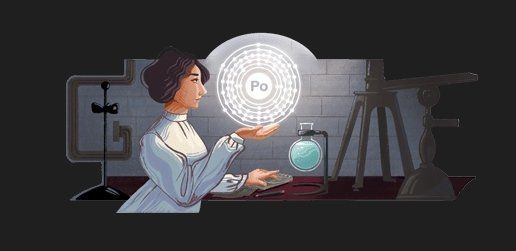The Google Doodle for June 18 celebrates the 140th birth anniversary of Romanian physicist Stefania Maracineanu. It artistically shows her working in a laboratory.
Maracineanu was among the pioneering women in the discovery and research of radioactivity. Born on June 18, 1882, in Bucharest, Maracineanu graduated with a degree in physical and chemical science in 1910. She began her career as a teacher at Central School for Girls in Bucharest but got a scholarship from the Romanian Ministry of Science while working this job.
Also Read | Pot that drove the punch: Mike Tyson reveals why he beat man on airplane
She then decided to pursue graduate research, at Paris’ Radium Institute. At the time, this institute was under the direction of Nobel Prize-winning physicist Marie Curie and had become a worldwide centre for studying radioactivity.
Maracineanu began her PhD research on polonium, the same element discovered by Curie.
During the course of her research, the Romanian discovered that half-life depended on the kind of metal it was placed on. She examined whether alpha rays from the polonium had managed to transfer some atoms of the metal into radioactive isotopes. This research eventually led to the first instance of artificial radioactivity.
Also Read | Jan 6 hearings: What we learned so far and what’s next
Maracineanu enrolled in Paris’ Sorbonne University, to complete her PhD in physics. She achieved this feat in two years. Then, the Romanian scientist worked for four years at the Astronomical Observatory in Meudon, before returning to her country and establishing its first laboratory for studying radioactivity.
Part of her research interest also leaned towards studying artificial rain, and Maracineanu travelled to Algeria, to test the results. She also found a link between earthquakes and rainfall, reporting that there’s a significant rise in radioactivity in the epicentre, during an earthquake.
Also Read | Microsoft’s Internet Explorer: A journey through the years
While Maracineanu didn’t receive a lot of global recognition for her work, the Academy of Sciences of Romania was aware of her contributions and selected the physicist to be the Director of research.
She died in 1944 of cancer, allegedly from radiation exposure.







